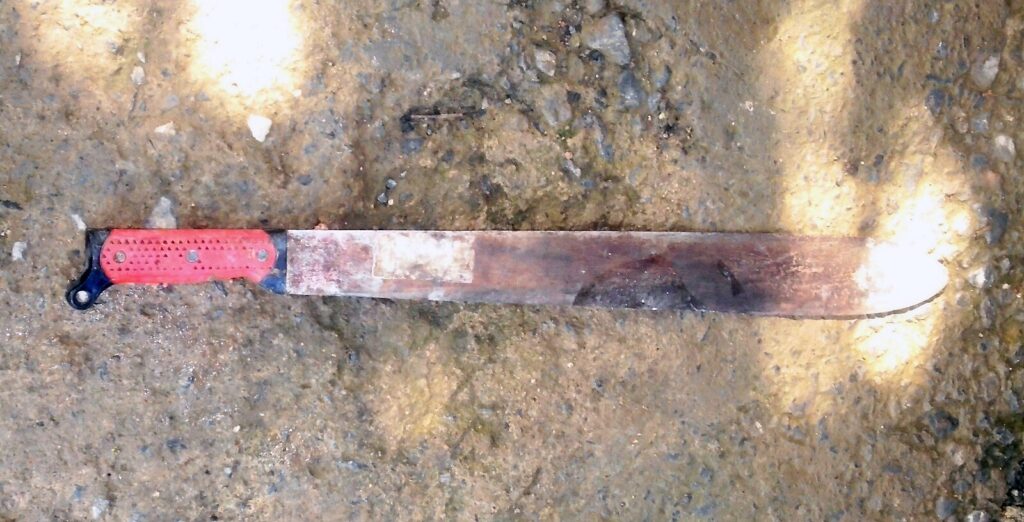- About Ramapo
- Academics
- Admissions & Aid
- Student Life
- Athletics
- Alumni
- Arts & Community
- Quick Links
- Apply
- Visit
- Give
Kwibuka, Panel 8
A machete is a broad blade used as an agricultural implement similar to an ax. It can be compared to a long-bladed knife. In various tropical and subtropical countries, the machete is frequently used to cut through rainforest undergrowth and for agricultural purposes.
The Hutus’ Machete
The machete, a common domestic farming tool in Rwanda, has come to symbolize the 1994 Genocide of Tutsi due to its prominence as a weapon of interpersonal slaughter. Before the genocide, in addition to their agricultural uses, machetes were seen as tools for protection and for solving disputes. Hutu Extremists often framed their genocide as a war of self-defense. Machetes and other traditional weapons were used by poor people to kill other poor people, as Contextual factors often condition genocidaires’ choices of weapon. The use of the machete was thus widespread. Months before the genocide, Human Rights Watch presented evidence that the government was purchasing weapons, including high volumes of machetes. The normative status of machetes as tools of self-defense resonated with the Hutu-extremist propaganda that framed the genocide as an act of collective self-defense. After the genocide, perpetrators continued to use the very machetes they had deployed in the genocide, in same the domestic manner in which they had used them previously. In a restorative transitional justice model, perpetrators should not have the option to keep the tools they used to commit mass atrocities.
Quick Links
Bibliography
Goose, Stephen D., and Frank Smyth. “Arming Genocide in Rwanda.” Foreign Affairs 73, no. 5 (1994): p. 91 86–96.
Guichaoua, André. “Did Machete Imports to Rwanda Prove that the Genocide against the Tutsi Was Planned?” The Conversation, September 2, 2020.
Human Rights Watch. “The Rwandan Genocide: How It Was Prepared.” Human Rights Watch Briefing Papers. HRW Website. 2019.
Meijer, Cécelle, and Philip Verwimp. “The Use and Perception of Weapons Before and After Conflict: Evidence from Rwanda.” Small Arms Survey, (2005): 1-21.
TRT World. “Survivor Recounts Horrors of Rwanda Genocide.” April 9, 2019. YouTube, 03:13.
Verwimp, Philip. 2006. “Machetes and Firearms: The Organization of Massacres in Rwanda.” Journal of Peace Research 43 (6): 5–22.
Photo Source
Jose Jr Romero, Un Machete. May 30, 2016. WikiCommons.
Copyright ©2025 Ramapo College Of New Jersey. Statements And Policies. Contact Webmaster.


Follow Us!